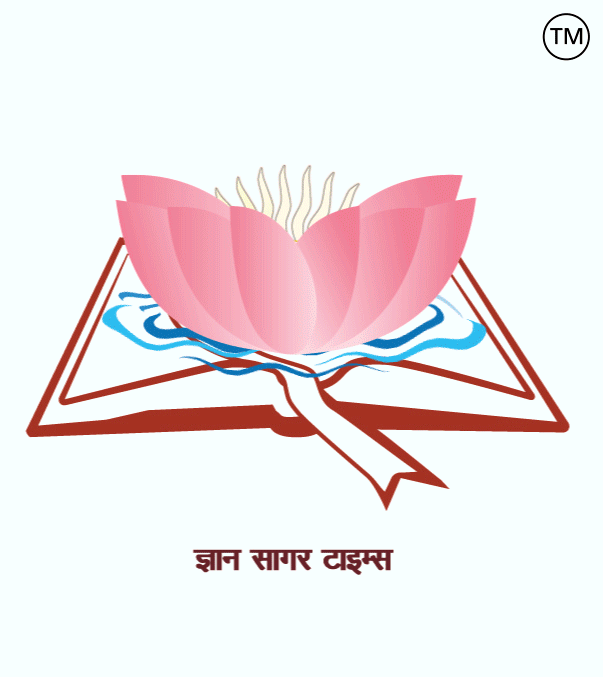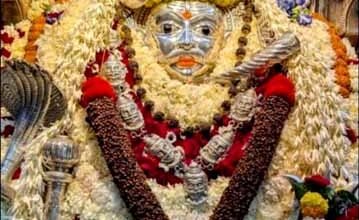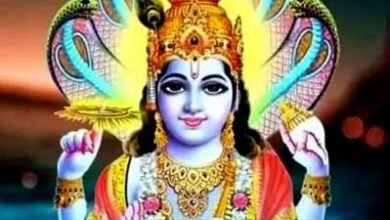
गुरु या व्यास पूर्णिमा…
ॐ वेदाहि गुरु देवाय विद्महे परम गुरुवे धीमहि तन्नौ: गुरु: प्रचोदयात्।
पौराणिक ग्रंथों के अनुसार आषाढ़ महीने की “पूर्णिमा” के दिन महर्षि वेदव्यास जी का जन्म हुआ था. वेदव्यास जी ने महाभारत एवं श्रीमद्भागवत सहित 18 पुराणों एवं 18 उपनिषदों की रचना की थी. इसलिए इस दिन को व्यास पूर्णिमा भी कहा जाता है. यह आषाढ़ मास की पूर्णिमा तिथि को मनाया जाता है और गुरु-शिष्य परंपरा के सम्मान का प्रतीक है. गुरु पूर्णिमा को ही ‘व्यास पूर्णिमा’ के नाम से भी जाना जाता है.
‘गुरु’ दो अक्षरों से मिलकर बना एक शब्द है जिसका अर्थ होता है… अंधकार को दूर कर प्रकाश की ओर ले जाना… या यूँ कहें कि, गुरु वह है जो अज्ञान रूपी अंधकार को दूर कर ज्ञान रूपी प्रकाश की ओर ले जाना वाला ही गुरु होता है. पौराणिक ग्रंथों में भी गुरु तत्व की प्रशंसा की गई है. ईश्वर के अस्तित्व में मतभेद हो सकता है, किन्तु गुरु के लिए कोई मतभेद आज तक नहीं हुआ है. प्रत्येक गुरु भी दूसरे गुरु को आदर-प्रशंसा एवं पूजा सहित पूर्ण सम्मान देतें है. गुरु ने जो भी नियम बताए हैं उन नियमों पर श्रद्धा से चलना शिष्य का परम कर्तव्य होता है. गुरु का कार्य नैतिक, आध्यात्मिक, सामाजिक एवं राजनीतिक समस्याओं को हल करना भी होता है.
सनातन संस्कृति में “गुरु” का महत्व विशेष होता है पौराणिक ग्रंथों में भी कई कहानियों में गुरु शिष्य परम्परा का वर्णन मिलता है. अनादी काल से ही गुरु की सलाह सिर्फ आध्यात्म या धार्मिकता तक ही सीमित नहीं रही है, बल्कि देश पर राजनीतिक विपदा आने पर गुरु ने देश को उचित सलाह देकर विपदा से उबाराते भी हैं. एक श्लोक के अनुसार- ‘यस्य देवे परा भक्तिर्यथा देवे तथा गुरु’ के जैसी भक्ति की आवश्यकता होती है, वैसी देवता के लिए भी होती है. सद्गुरु की कृपा से ईश्वर का साक्षात्कार भी संभव होता है, गुरु की कृपा के अभाव में कुछ भी संभव नहीं होता है.
गुरु की महिमा के अनुसार ही उन्हें ईश्वर से भी ऊँचा पद दिया गया है. शास्त्र वाक्य में ही गुरु को ही ईश्वर के विभिन्न रूपों में जैसे… ब्रह्मा, विष्णु एवं महेश्वर के रूप में स्वीकार किया गया है. गुरु को ही ब्रह्मा कहा गया, क्योंकि वह शिष्य को बनाता है, नव जन्म देता है. गुरु, विष्णु भी है, क्योंकि वह शिष्य की रक्षा करता है गुरु, साक्षात महेश्वर भी है क्योंकि वह शिष्य के सभी दोषों का संहार भी करता है. संत कबीर कहते हैं -‘हरि रूठे गुरु ठौर है, गुरु रूठे नहिं ठौर.’ कहने का तात्पर्य है कि, भगवान के रूठने पर तो गुरू की शरण ही रक्षा कर सकती है, किंतु गुरू के रूठने पर कहीं भी शरण मिलना सम्भव नहीं होता है. जिसे ब्राह्मणों ने आचार्य, बौद्धों ने कल्याणमित्र, जैनों ने तीर्थंकर और मुनि, नाथों तथा वैष्णव संतों और बौद्ध सिद्धों ने उपास्य सद्गुरु कहा है उस श्री गुरू से उपनिषद् की तीनों अग्नियाँ भी थर-थर काँपती हैं.
त्रोलोक्यपति भी गुरू का ही गुणनान किया करते है. ऐसे गुरू के रूठने पर कहीं पर कहीं भी ठौर नहीं मिलता. कबीर दास जी कहते है… सतगुरु की महिमा अनंत, अनंत किया उपकार लोचन अनंत, अनंत दिखावण हार – अर्थात सद्गुरु की महिमा अपरंपार है. वे शिष्यों पर अनंत उपकार करते है, विषय-वासनाओं से बंद शिष्य की बंद ऑखों को ज्ञान चक्षु द्वारा खोलकर उसे शांत ही नहीं, अनंत तत्व ब्रह्म का दर्शन भी करावा देते हैं.
गुरु पूर्णिमा के दिन से चार महीने तक परिव्राजक साधु-सन्त एक ही स्थान पर रहकर ज्ञान की गंगा बहाते हैं. ये चार महीने मौसम की दृष्टि से भी अति उत्तम होते हैं, न तो अधिक गर्मी और न ही अधिक सर्दी, इसलिए अध्ययन के लिए उपयुक्त माने गए हैं. जैसे सूर्य के ताप से तप्त भूमि को वर्षा से शीतलता एवं फसल पैदा करने की शक्ति मिलती है, वैसे ही गुरु-चरणों में उपस्थित साधकों को ज्ञान, शान्ति, भक्ति और योग शक्ति प्राप्त करने की शक्ति मिलती है.
गुरु पूर्णिमा का यह पर्व हमें अपने जीवन में गुरु के महत्व को समझने और उनके प्रति श्रद्धा रखने का संदेश देता है. गुरु न केवल आध्यात्मिक ज्ञान देते हैं, बल्कि वे हमें सही मार्ग दिखाते हैं, हमारे अंदर की बुराइयों को दूर करते हैं और हमें एक बेहतर इंसान बनने में मदद करते हैं.
========== ========= ===========
Guru or Vyas Purnima…

Om Vedahi Guru Devaya Vidmahe Param Guruve Dheemahi Tanno: Guru: Prachodayat।
According to mythological texts, Maharishi Ved Vyas ji was born on the day of “Purnima” of the month of Ashadh. Ved Vyas ji composed 18 Puranas and 18 Upanishads, including the Mahabharata and Shrimad Bhagwat. Therefore, this day is also called Vyas Purnima. It is celebrated on the full moon day of the month of Ashadh and is a symbol of respect for the Guru-disciple tradition. Guru Purnima is also known as ‘Vyas Purnima’.
‘Guru’ is a word made up of two letters, which means… to remove darkness and lead to light… or in other words, Guru is the one who removes the darkness of ignorance and leads to the light of knowledge. Guru element has also been praised in mythological texts. There may be differences of opinion about the existence of God, but there has been no difference of opinion about the Guru to date. Every Guru also gives full respect to the other Guru with respect, praise and worship. It is the ultimate duty of the disciple to follow the rules given by the Guru with devotion. The work of the Guru is also to solve moral, spiritual, social and political problems.
The importance of “Guru” is special in the Sanatan culture. In the mythological texts, the Guru-disciple tradition is described in many stories. Since time immemorial, the advice of the Guru has not been limited to spirituality or religion only, but when the country faces a political crisis, the Guru also gives proper advice and saves the country from the crisis. According to a shloka – ‘Yasya deve para bhaktiryatha deve tatha guru’, the same devotion is required for the God as well. With the grace of Sadguru, it is possible to see God; nothing is possible without the grace of the Guru.
According to the glory of the Guru, he has been given a higher position than God. In the scriptures, Guru has been accepted as God in various forms like Brahma, Vishnu and Maheshwar. Guru is called Brahma because he creates the disciple, gives him a new birth. Guru is also Vishnu because he protects the disciple. Guru is also Maheshwar because he destroys all the faults of the disciple. Saint Kabir says – ‘If God gets angry, Guru is there, but if Guru is angry, there is no place.’ It means that if God gets angry, only the Guru’s refuge can protect you, but if the Guru gets angry, it is not possible to find refuge anywhere. The one whom Brahmins call Acharya, Buddhists call Kalyanmitra, Jains call Tirthankar and Muni, Naths and Vaishnav saints, and Buddhist Siddhas call worshipable Sadguru, even the three fires of Upanishad tremble in front of that Shri Guru.
The Lord of the three worlds also praises the Guru. If such a Guru gets angry, there is no place to find refuge anywhere. Kabirdas ji says… The glory of the Sadguru is infinite; he has done infinite favours, his eyes are infinite, and he shows infinite things – that is, the glory of the Sadguru is limitless. He does infinite favours to his disciples, he opens the eyes of the disciple closed by worldly desires with the eyes of knowledge and not only calms him down, but also makes him see the infinite element Brahma.
From the day of Guru Purnima, for four months, the wandering saints stay at one place and spread the Ganga of knowledge. These four months are also very good from the point of view of weather, neither too hot nor too cold, hence they are considered suitable for study. Just as the land heated by the heat of the sun gets coolness and the power to produce crops from rain, similarly, the seekers present at the feet of the Guru get the power to attain knowledge, peace, devotion and yoga power.
This festival of Guru Purnima gives us the message of understanding the importance of the Guru in our lives and having respect for him. Gurus not only give spiritual knowledge but they also show us the right path, remove the evils within us and help us to become better human beings.





